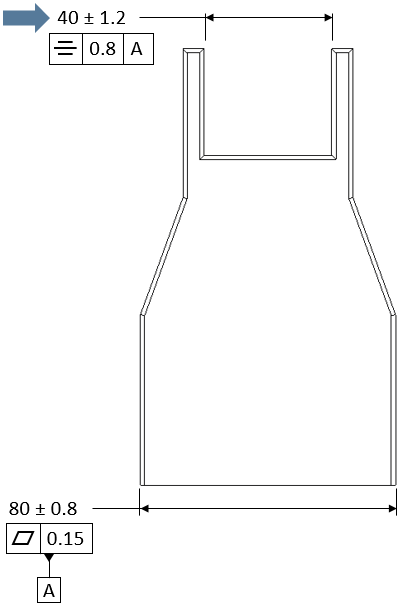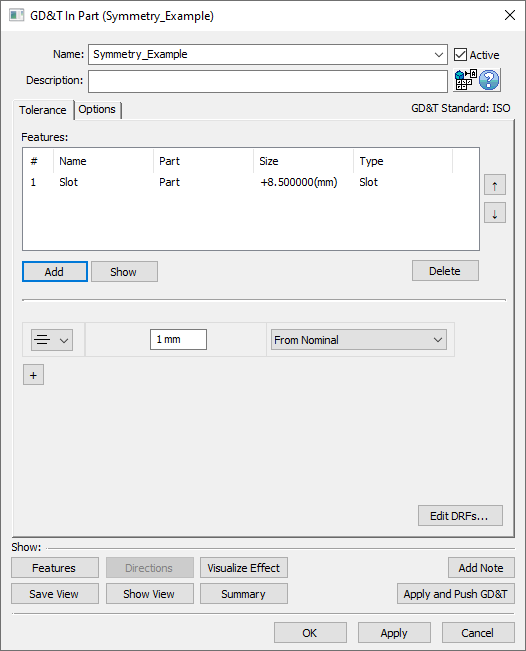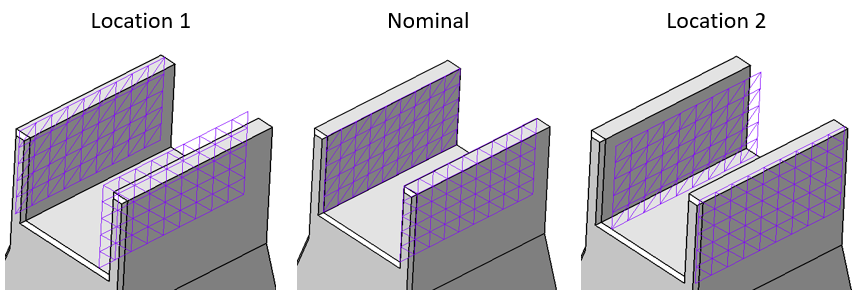A ![]() Symmetry GD&T is used to vary the location of a slot or tab relative to a Datum feature it is symmetric to. In 3DCS a
Symmetry GD&T is used to vary the location of a slot or tab relative to a Datum feature it is symmetric to. In 3DCS a ![]() Symmetry GD&T varies the location only of the feature. Note that even though in ASME a Symmetry GD&T is controlling location, orientation, and form, in 3DCS it is only controlling location. For this reason, it may be necessary to add refinements to the GD&T that are not on the drawing.
Symmetry GD&T varies the location only of the feature. Note that even though in ASME a Symmetry GD&T is controlling location, orientation, and form, in 3DCS it is only controlling location. For this reason, it may be necessary to add refinements to the GD&T that are not on the drawing.

Creating Symmetry Procedure:
1.In the GD&Ts dialog, select ![]() Symmetry in the drop-down list and select [Add GD&T]. This will open up the GD&T dialog.
Symmetry in the drop-down list and select [Add GD&T]. This will open up the GD&T dialog.

2.Underneath the Features list, select [Add].
3.Select the feature(s) whose location should be varied by this GD&T.
4.Click [OK][Close] in the Pick FeatureSelect dialog
At this point the GD&T dialog will pop back up. Notice that the features selected are now in the Features list in the top half of the dialog.

5.Enter the range in the text entry field.
6.Select a DRF or From Nominal from the Datum Reference Frame drop-down. See Datum Reference Frames for more information about creating and using DRFs.
7.Select [OK] to exit the dialog and the save the GD&T.
How this GD&T Varies the Feature:
A ![]() Symmetry GD&T can be applied to a slot or tab. When applied to a slot or tab then the direction of variation for the linear zone is determined by the direction of the feature (the variation will be along the direction of the feature.
Symmetry GD&T can be applied to a slot or tab. When applied to a slot or tab then the direction of variation for the linear zone is determined by the direction of the feature (the variation will be along the direction of the feature.
A sample feature with how a ![]() Symmetry GD&T would commonly deviate it is shown below.
Symmetry GD&T would commonly deviate it is shown below.
Note: While only a few deviated locations are shown below, the actual variations will use the entire specified zone.

An isometric view of a slot with a Symmetry GD&T applied to it.

A side view of the same slot with a Symmetry GD&T applied to it.